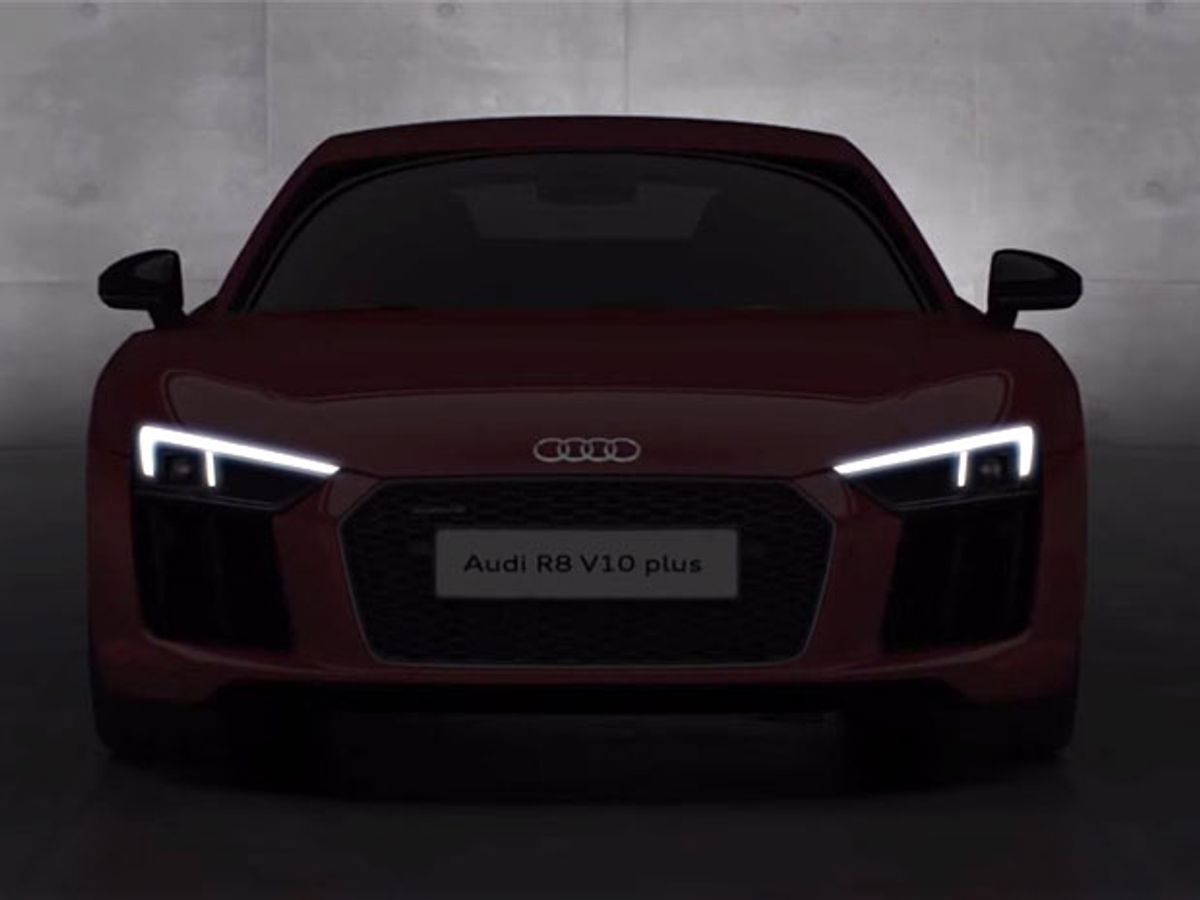It’s hard enough to tear around a tricky racetrack in broad daylight, let alone on a pitch-black Portuguese night. But that’s when the laser spotlight on Audi’s new 2017 R8 supercar comes into its own.
The supplemental laser spotlight—powerful enough to double the 300-meter range of the R8’s standard LED high beams—offered a crucial performance edge at the Autodromo do Algarve, a 4.69-km road circuit and Formula One test facility in Portimao known for devilish blind corners and gut-check downhill plummets. It’s a place where it’s nice to see where you’re going. Especially at night, in a street car, sans roll cage, that effortlessly tops 210 km/h—even with the track’s longest straightaway denied to us for safety’s sake.
IEEE Spectrum has covered the development of laser light in automobiles from the get-go, beginning with an underground BMW lab in Munich in summer 2013, and on to the race between BMW and Audi to put the technology in showrooms. But this is our first real-world test of the technology.
In the Audi, each spotlight module houses four powerful, compact laser diodes, each just 300 micrometers in diameter. (The R8’s standard headlamps feature 37 LED’s in each unit to manage both low- and high-beam functions). Those diodes pump blue laser beams, at a wavelength of 450 nanometers, through phosphorus, which converts part of it to a warmer color. That phosphorescence (to state it with etymological exactitude), together with the remaining blue, creates white light at a color temperature of 5,500 Kelvin—an eye-pleasing, daylight-mimicking color temperature unmatched by even the best LED’s.
The night-slicing lasers are nearly as impressive as the R8’s carbon fiber-and-aluminum Audi Space Frame and its 610-horsepower V10 engine, which escorts the supercar from zero to 100 kilometers per hour (62 mph) in 3.2 seconds and to a blistering 330 km/h (205 mph) top speed.
This video gives an exploded view of the laser system and shows how it fits in with the conventional headlights:
Audi’s laser spot activates automatically outside of urban areas when the car reaches speeds above 60 km/h (37.3 mph), offering what Audi claims are big advantages in visibility and safety for drivers, including the ability to automatically tailor the beam for any road environment or speed. Audi is going further, developing a pixelated laser system with moveable micromirrors whose potential functions include communicating words and symbols in light to pedestrians or other cars.
To ensure that other drivers aren’t dazzled by laser lights, the R8 uses an intelligent camera-based system to detect oncoming or leading traffic. It actively adjusts and dims the light pattern, essentially wrapping other cars in a “cone of darkness.” Audi and BMW both tout lasers’ abiity to deliver brighter, better-focused light than LEDs can, along with superior energy efficiency and super-compact packaging that could free designers to radically revamp lighting design.
Americans won’t have to worry about pros and cons for now, because these lasers won’t be coming to their cars just yet. The archaic U.S. federal automotive lighting regulations prohibit technically advanced headlamps (aside from those that swivel to follow curves) with features beyond largely standardized low- and high beams. Those include adaptive units such as the Audi and BMW lasers, or Mercedes’ latest LEDs.
Commuters on a budget won’t need to worry just yet, either. Laser lights have been introduced on a pair of supercars with six-figure sticker prices: the R8 and the BMW i8 plug-in hybrid. But for all their potential, lasers might be another technology that’s technically superior, yet still doesn’t catch on with major automakers or mainstream consumers.
But as I swept the R8 through a tricky off-camber corner at the Autodromo, floored the accelerator and crested a blind hill, the laser spotlight illuminated a breathtaking length of the plummeting valley below. It may be months or years before I see a nighttime road this clearly again—but at that precise moment, I was grateful for my laser wingman.
Lawrence Ulrich is an award-winning auto writer and former chief auto critic at The New York Times and The Detroit Free Press.



